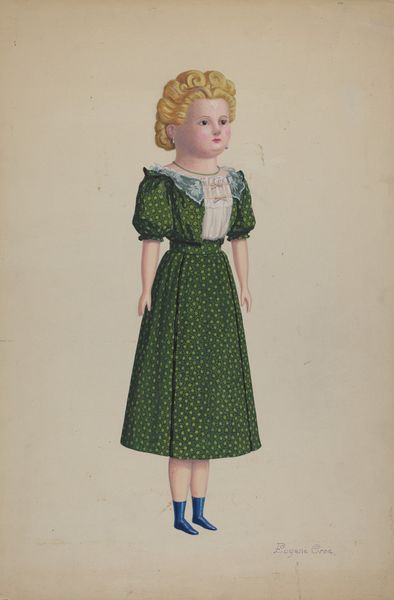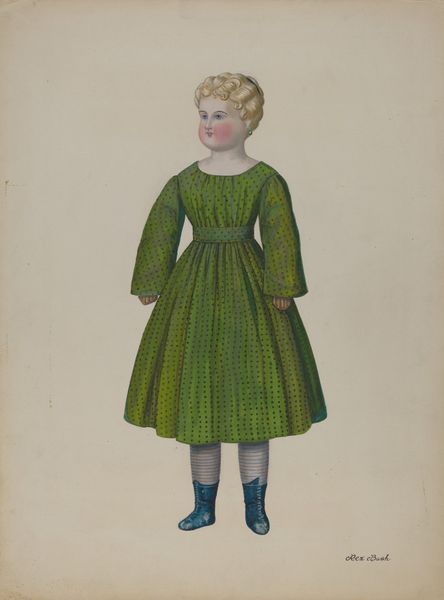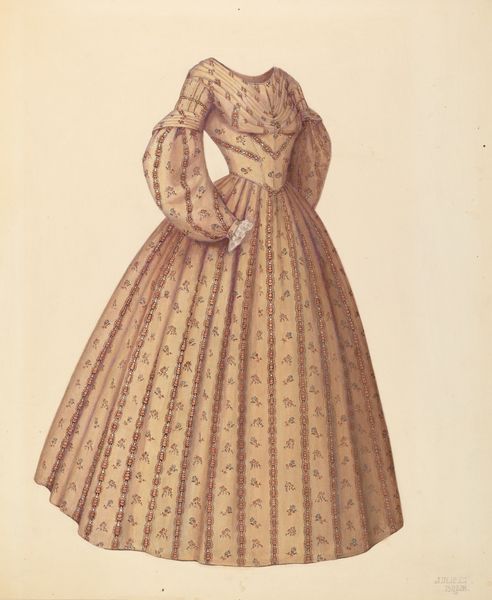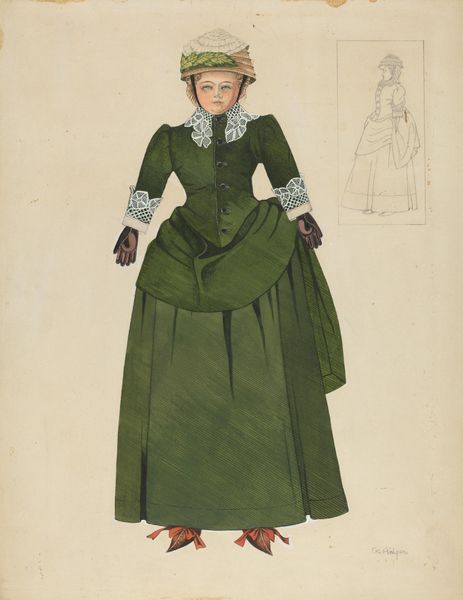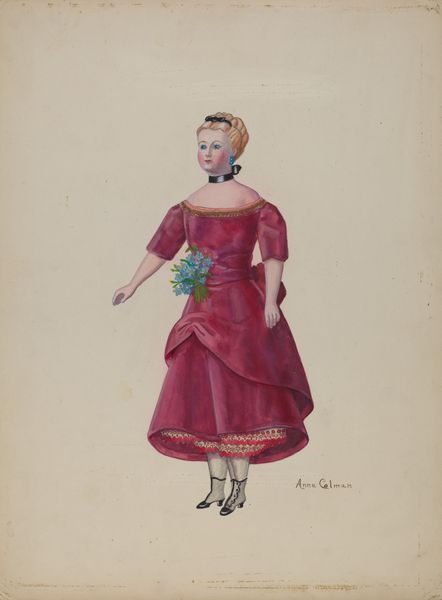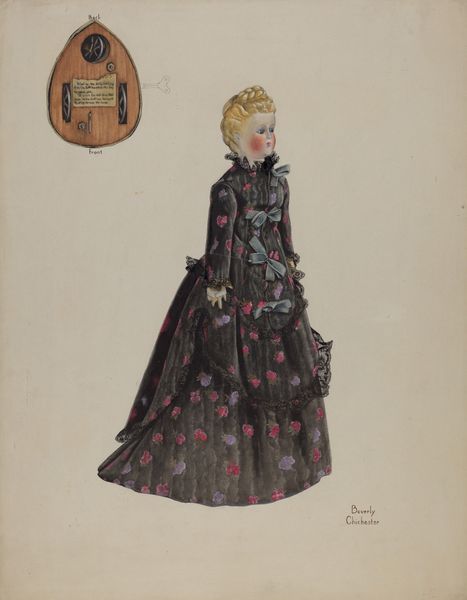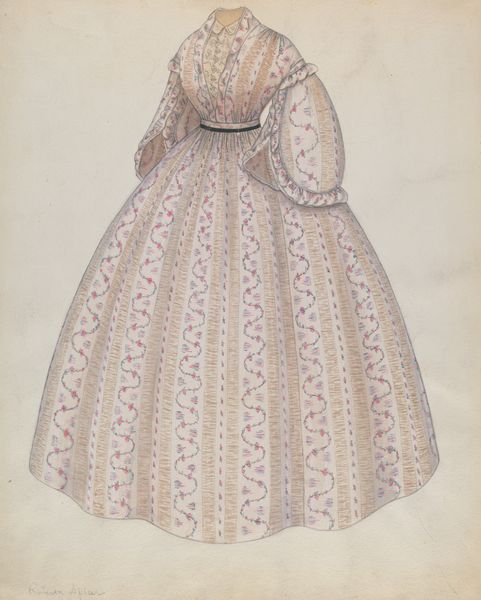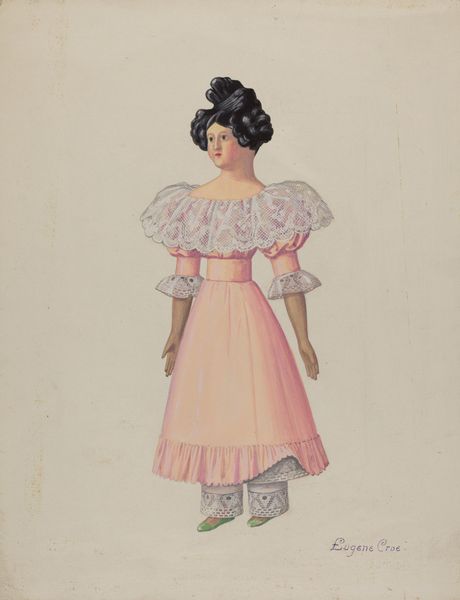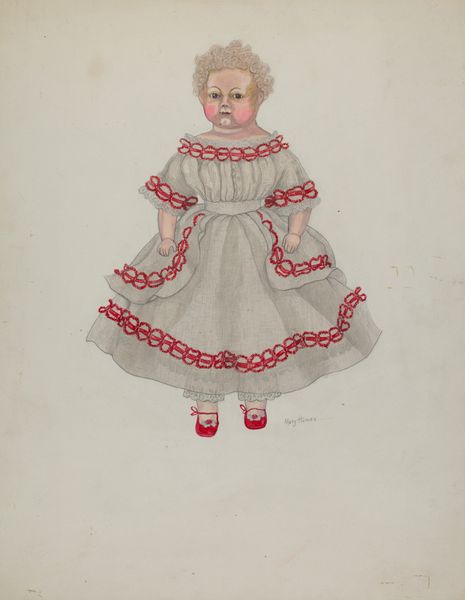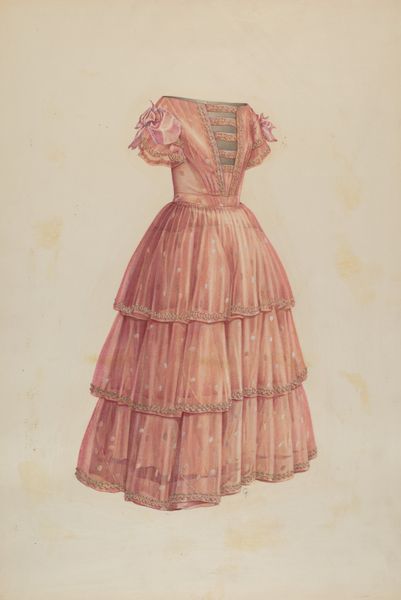
drawing
#
portrait
#
drawing
#
academic-art
Dimensions: overall: 50.8 x 38 cm (20 x 14 15/16 in.) Original IAD Object: 28" high
Copyright: National Gallery of Art: CC0 1.0
Curator: So here we have Eugene Croe’s circa 1938 drawing titled "Doll – 'Leta'". Editor: The delicacy of that dress overlay contrasted with the stiffness of the doll's posture is quite striking. There is almost a sense of tension contained in this portrait. Curator: Dolls in portraiture were certainly powerful symbols for artists working in this period. They allowed a critical lens through which the representation of women in interwar European society could be questioned. We must also note that many artists such as Croe did portraits to appeal to conservative gallery visitors, as this generated more revenue. Editor: I notice the subtle variations in tone within the dress fabric itself; there are washes of crimson bleeding into a mauve underlayer which enhances its three-dimensionality. And how the fine lacework at the neck seems to both adorn and confine. Curator: It is fascinating that you mention containment. Dolls were so widely commercially available at this time that childhood play became regimented for gender roles. To see the artist frame Leta with such meticulous detail suggests both complicity with and subversion of wider political narratives. This is typical of artists like Croe in that time. Editor: I see that. And thinking formally, the repeated pattern, almost cellular, on the pink dress lends the figure a certain kind of artifice—a sense of replication and perfect assembly, that a formal garden would suggest too. But there's also a hand-wrought feel in the brushstrokes used for the lace trim. Curator: Croe likely worked to emphasize how dolls became paragons of social expectations—objects that dictated acceptable behaviour, domestic roles, and an obsession with aesthetics within conservative circles. This undoubtedly would have been well understood by his patrons. Editor: Looking at the use of line and the textural variety gives me much to consider. I wonder if that balance between spontaneity and control, extends to its societal message. Curator: I am glad that we share a sentiment of contemplation for this wonderful, yet controversial artwork. Editor: Yes, indeed, this conversation gave us a fresh outlook on what could at first have appeared as something purely academic.
Comments
No comments
Be the first to comment and join the conversation on the ultimate creative platform.
